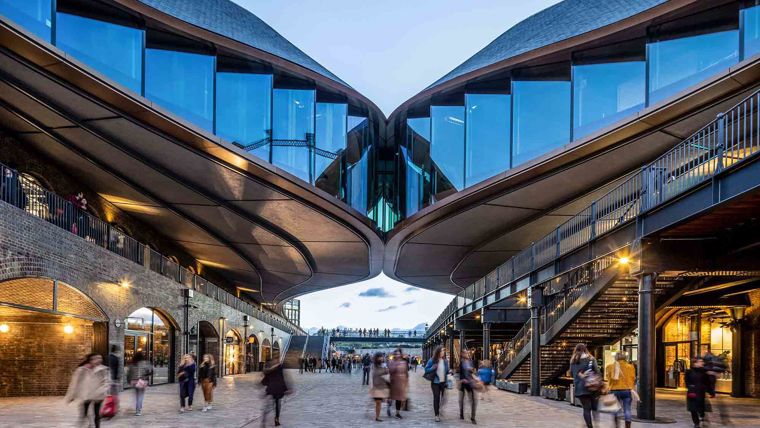As structural engineers, safety must be our highest priority
Unprecedented changes are underway in how buildings are designed, built, and ultimately reused, partly because of the urgent need to improve the sustainability of the built environment. Some of these changes are inadvertently reducing structural safety.


Arup Fellow
Andrew Lawrence
Director
Last updated: September 2023
During the 20th century, structural engineers practically eliminated building collapses in most developed countries, through the development of rigorous building codes.
However, both confidential industry reporting and legal claims suggest that design errors are now increasing, and consequently that structural safety is deteriorating across the world. Why is this happening and how can the errors be reduced?
The building industry is going through a time of change
Unprecedented changes are underway in how buildings are designed, built, and ultimately reused, partly because of the urgent need to improve the sustainability of the built environment. Some of these changes are inadvertently reducing structural safety.
For example, modern methods of construction have the potential to transform the industry. However, by definition, they are untried, untested, and not fully covered by codes and guidance. It can take years for problems to emerge and, subsequently, for safe design methods to be developed, because we design for extreme events such as earthquakes or strong winds. There is therefore a risk that new methods of construction can have unforeseen problems. Ronan Point was a well-known example, where a gas explosion exposed failings in the design of large panel system buildings across the industry and led to widespread changes to their methods of design. Mass timber construction today is another example; most current structural codes and guidance were written many years ago when timber structures were smaller and simpler. Similarly, most current fire regulations were not intended for large combustible structures (such as a large timber structure). This does not mean we should avoid modern methods, but rather that we should approach them with appropriate caution, do our research properly and apply a first principles approach to ensure our designs are safe. Both mass timber and large panel systems are safe methods of construction, but only when done correctly.
Another change underway is the growing reuse and extension of existing buildings. This is perhaps one of the single biggest steps we can take to avoid the carbon emissions associated with new construction. However, assessing an existing building is a very different skill from following codified rules to design a new building, and not all engineers currently have the experience, which can lead to safety issues being overlooked. For example, when extending a building vertically, it is easy to focus on the modest increase in gravity load, forgetting the much more significant increase in wind load or the impact on fire safety (especially if the building was designed to historic codes which are now known to be deficient).
Finally, some of the biggest risks are those inherent in modern methods of design. Digital tools can help reduce design costs and produce more efficient designs, but it is much easier to make mistakes. By automating the design process, it is easy to miss out on the vital steps of concept and scheme design, where we start with simple models to understand the structural behaviour. Working through the concept and scheme stages is an essential part of the checking process – as we add increasing complexity to our computational models, we should be looking for the same overall structural behaviour to ensure our models are performing correctly. Today, we have the potential to bypass the schematic stages and jump straight to very detailed models that are sometimes almost impossible to understand or check, increasing the likelihood of mistakes. There is also a risk that use of software results in engineers losing the intuitive feeling for how a structure works and roughly how large structural elements need to be.
So how can design errors be avoided?
The most effective way to tackle errors is to tackle the behaviour that leads to those errors. There is nothing inherently wrong with modern methods of construction or modern methods of design, rather it is how we use them that causes the problems. Similarly, reusing existing buildings is to be encouraged, but needs to be done safely.
For example, the simplest way to avoid errors in new buildings is to have a simple structural diagram. Just because we have modern numerical methods and the ability to do complex calculations does not necessarily mean we should deploy these tools for the sake of it. Good engineering is designing out the hard sums, to make the structure work in a simple predictable way that is easier to design, easier to check and in most cases easier to build. Our role is not to adopt the geometry from the architect and make every part of that geometry contribute to the structure, but rather to rationalise the geometry into a sensible engineering structure without compromising the architect’s vision. We should also recognise when something is new, untested or unusual, and proceed with caution, questioning whether standard codified design methods are appropriate.
Existing buildings are different. Actual loadpaths are often more complex than the original designer intended. Our role must be to understand how and how hard the building is working. To do this we will need to consider factors such as the indeterminacy of the loadpaths and the likelihood of brittle failure occurring before redistribution, as well as many other potential issues.
Next, we need to recognise that all of us are human, all of us have gaps in our knowledge and all of us make mistakes. This is why structural engineering needs a team approach, and why the best engineers are those who understand their own limitations, discuss their designs with other engineers and recognise the dangers of arrogance.
It is also important to recognise that formal checking and reviewing processes, while important, are very unlikely to catch all the mistakes in a building design, and so are only a small part of the solution. Arguably, it is much more important to assemble a design team with a broad range of competencies, who continually question what they are doing and reach outside the team for advice. In addition, starting with simple structural calculations and simple understandable models, and slowly adding complexity means that the design is being continually checked at every stage. We should ensure that we use structural engineering software as a powerful tool to enhance what we do, and not allow it to erode our intuitive feel for how structures work.
Ultimately, it is the team undertaking the design who have the most potential to prevent errors through the way they work. It is important that members of the team feel individually accountable, understand the consequences of mistakes, and feel empowered to regularly seek advice. Adding a physical signature to a drawing (done increasingly rarely in a world of PDFs) or compiling calculations and sending them off to an independent checker can really help create a sense of accountability.
We must not allow a lack of feedback to lead to complacency
It takes a long time for falling standards to become apparent. Mistakes in the design of a building can remain hidden for years, only to emerge when there is an exceptionally strong wind, snowfall, fire or earthquake. It is therefore possible for an engineer to make the same mistake repeatedly over many years and have an impressive CV of completed buildings, when in fact they were all flawed designs.
Even where mistakes are discovered, they are usually kept confidential for reputational or legal reasons. This differs from other industries such as aerospace where sharing of errors has led to huge improvements in safety.
This overall lack of feedback means that the structural engineering profession is often unable to learn from its own mistakes. However, mistakes do happen, unfortunately in increasing numbers. It is our duty not to be complacent, to recognise the causes of those mistakes and to put robust measures in place so that we do not put the public at risk.
Get in touch with our team
Insights
Explore more design insights
Timber buildings are gaining appeal – but what are the whole life carbon savings?

How can multi-trade integrated mechanical, electrical and plumbing (MiMEP) design enhance construction?

Did COP28 create a buildings breakthrough?

The obstacles and opportunities of mass timber construction in the US

